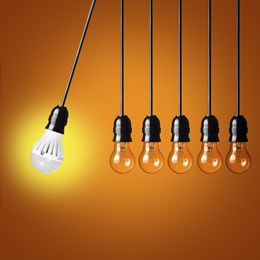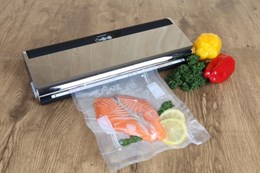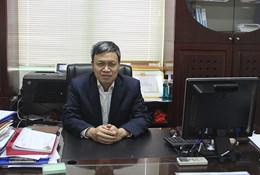-

One of the largest cancer treatment centres in Europe is to save thousands of pounds following a review of its energy management system.
-

HalcyonTM wireless lighting saves more energy than standard LEDs by automatically turning off unneeded lights and reporting your energy use.
-

An energy management system developed by Bayer uses a structured and systematic approach to help users harness potential energy savings that have already been identified. This is made possible by adapting energy usage to specific production and working conditions.
-

Philips Lighting just announced that they were selected to conduct a massive overhaul of over 5,000 streetlights in Poland’s historic “floating garden” city of Szczecin. The city plans to replace over half its streetlights with LEDs. All told, the LEDs will provide energy savings of 70 percent, and reduce the city’s costs by EUR 360,000 each year.
-

West Sacramento-based Raley's is rolling out a cleaning and sanitation program designed to save millions of gallons of water and dramatically lower its energy costs.
-

Oerlikon Leybold Vacuum exhibits food processing vacuum solutions at the CFIA Rennes, France and the ANUGA Foodtec, Germany. Oerlikon Leybold Vacuum is supplying the Food Processing Industry with advanced vacuum solutions
-

Renewing the hammers and screen on a mill reduced the energy used per kilogram of grain by 3% and increased milling rate (kg/m) by 5%. Feed grist size distribution was improved. On one of the farms the fan in the hammer mill was replaced following the test, resulting in a marked increase in throughput.
-

It is estimated that sustainable lighting could result in initial energy savings of 50-80 percent and lower annual CO2 emissions by 3,000 – 4,000 tons. Retrofitting will be equivalent to savings of $1.2 – $1.7 million per year in energy costs.
-

According to the Hanoi Energy Conservation Centre (Hanoi ECC), building blocks were one of the central objects to be subject to energy saving measures in the city in 2014. Thanks to the solutions including counselling, support, building blocks in the city have saved 535.3 TOEs and reduced 2,118 tons of CO2 emissions.
-

To top off the green changes, in another energy saving move, almost all of the lighting on the first floor of the Eiffel Tower has been converted to LED.
-

“Presence,” being tested in Hawaii, is yielding surprising energy savings–9 percent to 10 percent –by motivating people to change their energy use behavior.
-

Researchers at Temple University have shown that a strong electric field applied to a section of pipeline can smooth oil flow and yield significant pump energy savings in oil transport. Tests on a section of the Keystone pipeline found that the same flow rate could be achieved with a 75 percent reduction of pump power from 2.8 megawatts to 0.7 megawatts,
-

The energy footprint of a Solace appliance is approximately the same as a single server, so the energy saving is 90-98% across the messaging estate – with better performance, higher reliability and lower cost (you don’t have to buy those 50 servers).
-

A 10-minute shower uses about five liters of water, which is approximately 90 percent less than in a conventional shower. The water that flows into the floor drain is collected, purified and pumped back to the shower nozzle. Because the water is already heated the energy savings can amount to 80 percent.
-

2015 is the final year of the National Target Programme on energy saving and efficiency from 2013 to 2015; Hanoi aims to save 6-9% of the total projected energy consumption.
-

Hanoi People's Committee issued Decision No. 884/QD-UBND approving the Implementation Plan of the National Target Program on energy efficiency and savings (VNEEP) in 2015.
-

We show you our top ten energy saving tips, which can help you to reduce your energy bills, as well as the amount of gas and electricity you use.
-

Saving energy isn't just about being environmentally conscious - it's also a great way to save money.
-

Window treatments are not simply for decoration or privacy. Use light colored blinds, shades or drapes to block the sun's rays from heating up the house during the summer, especially on south and west facing windows, and to help keep out cold air in the winter.
-

A conventional thermostat regulates house heating at one temperature. Setting the temperature lower can save energy when you are out of the house or sleeping, but you may find the temperature uncomfortable while you wait for the house to heat up again.




















 Webinar 2: “Financial Support for Energy Efficiency Enterprises – Opportunities and Challenges”
Webinar 2: “Financial Support for Energy Efficiency Enterprises – Opportunities and Challenges”
 Vietnamese enterprises achieve green growth and cut costs through energy efficiency
Vietnamese enterprises achieve green growth and cut costs through energy efficiency
 Capacity Building for Program Implementing Entity
Capacity Building for Program Implementing Entity
 Promoting Energy Efficiency for Technical Staff of Brick and Ceramic Sector
Promoting Energy Efficiency for Technical Staff of Brick and Ceramic Sector
 Enhance Energy Efficiency Knowledge for Managers of Cement Industrial Enterprises
Enhance Energy Efficiency Knowledge for Managers of Cement Industrial Enterprises
 Capacity building for participating financial institutions of the VSUEE Project
Capacity building for participating financial institutions of the VSUEE Project
 Capacity building for participating financial institutions in Ho Chi Minh City
Capacity building for participating financial institutions in Ho Chi Minh City